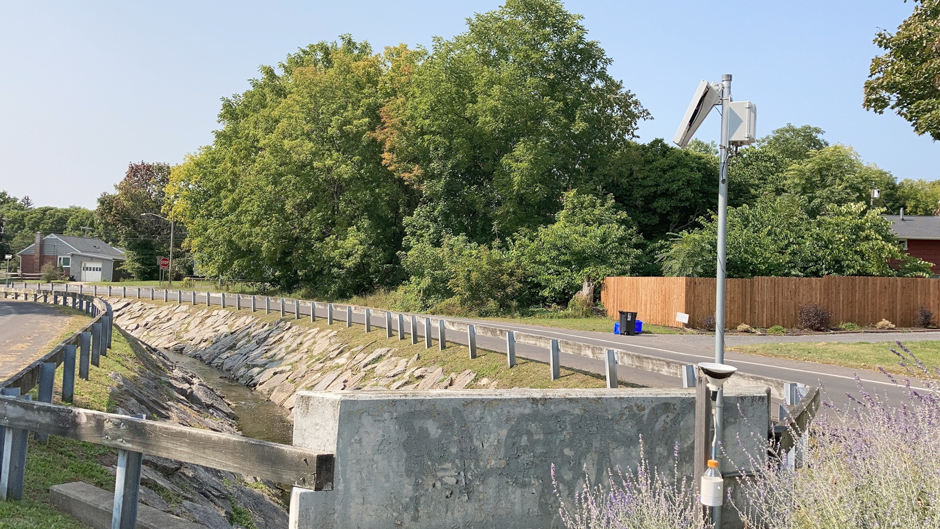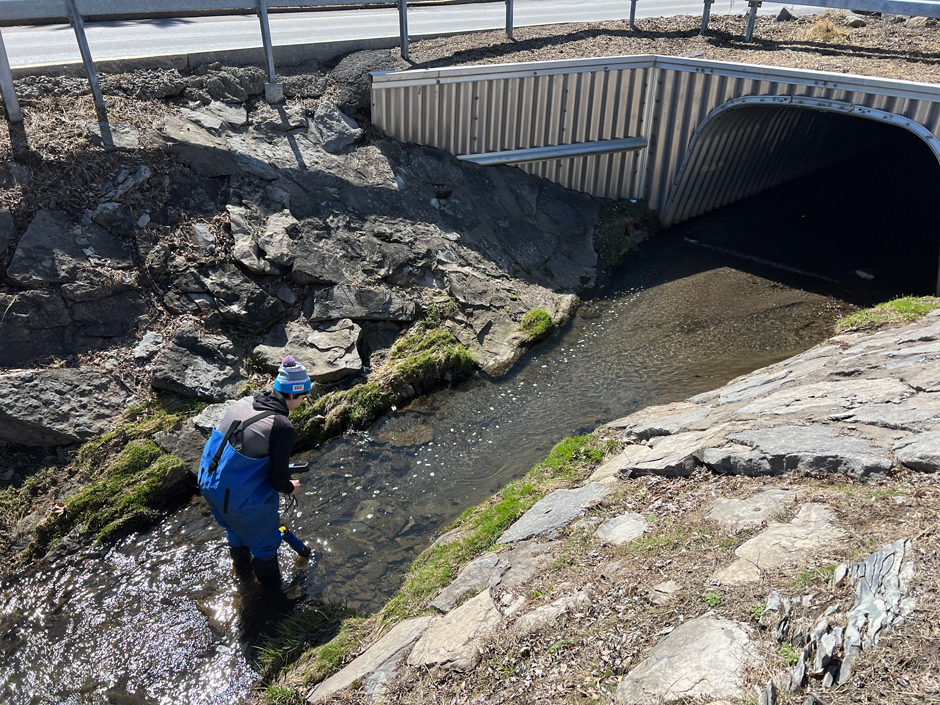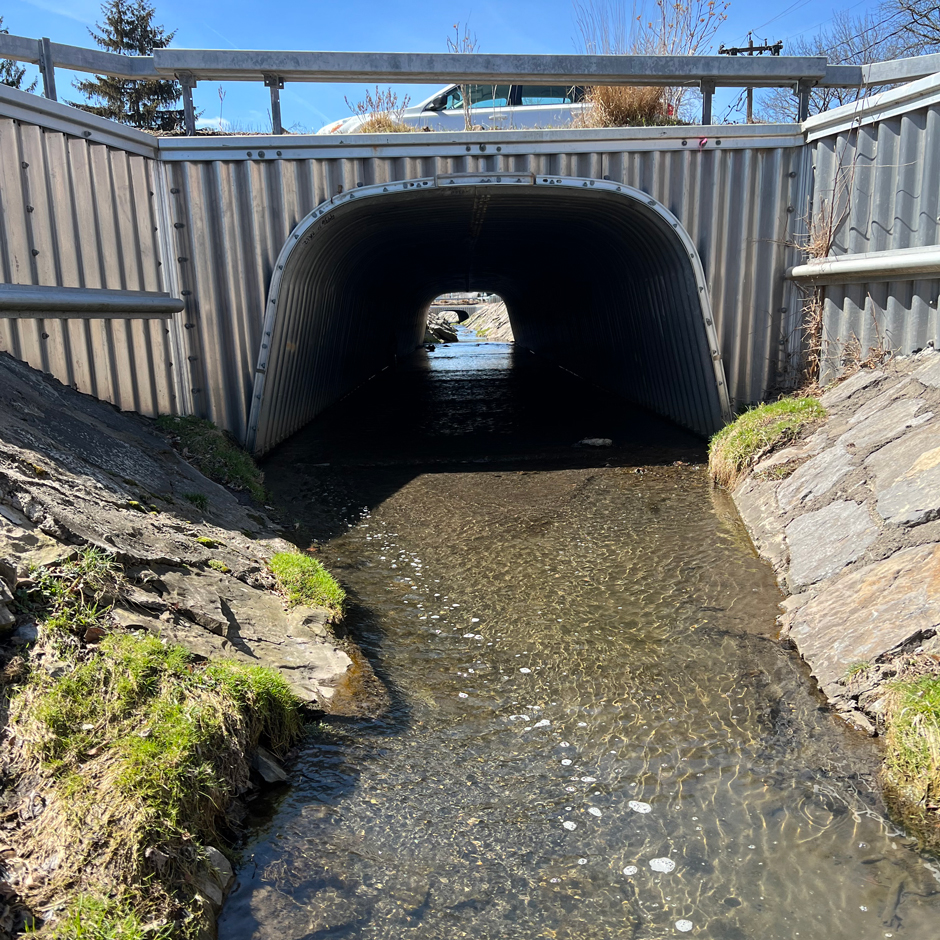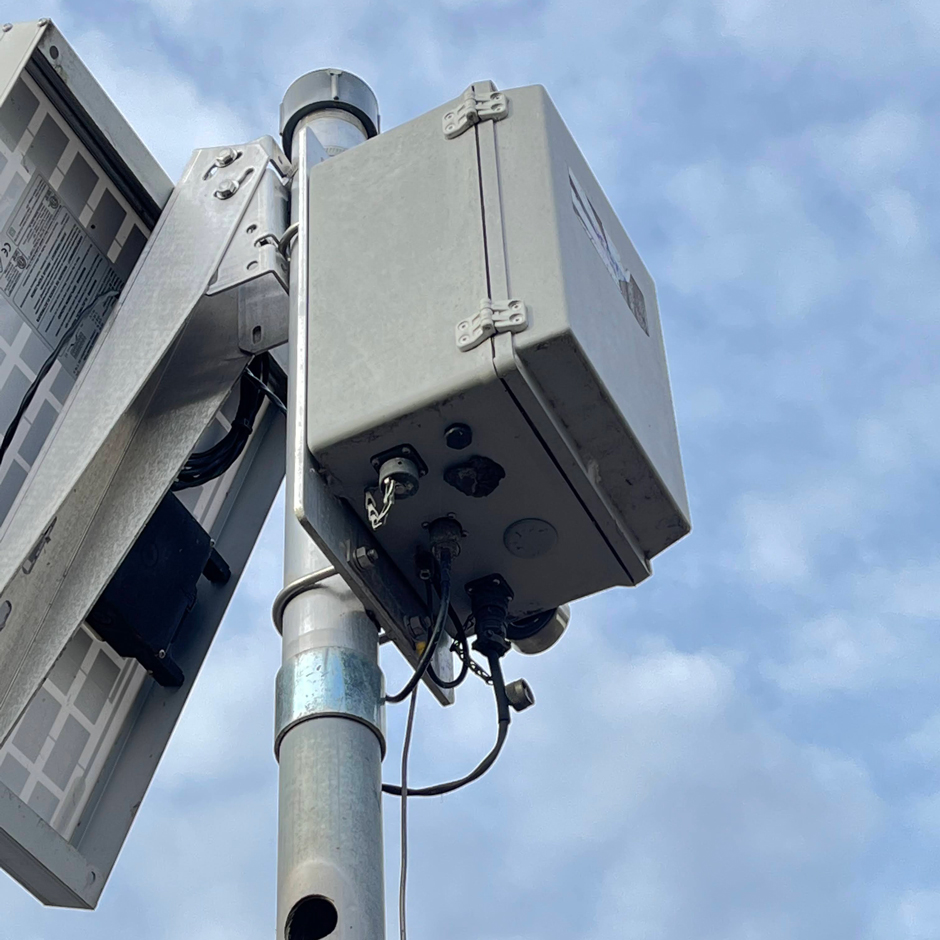Monitoring Meadowbrook Creek: Real-Time Data Collection in an Urban Creek
Meadowbrook Creek in Syracuse, New York, has been monitored by Syracuse University (SU) faculty and students for over a decade. Originally established by Dr. Laura Lautz in 2012, the early years of the program focused on collecting grab water samples for laboratory analysis and evaluating the impact of urban land use, human activities, and natural processes on water resources.
Tao Wen, an Assistant Professor in SU’s Department of Earth and Environmental Sciences, took over the program in 2020 and upgraded the existing systems to include 4G modems that allowed for real-time data viewing.

An overview of the Fellows Ave monitoring station along Meadowbrook Creek. (Credit: Tao Wen / Syracuse University)
Monitoring Efforts on Meadowbrook Creek
Three continuous monitoring sites along the urban creek measure water depth, water temperature, and conductivity every fifteen minutes. The real-time systems are equipped with a Seametrics CT2X CTD sensor and a NexSens data logger, which transfers data to the cloud, where it can be viewed via WQData LIVE.
The change to real-time led by Wen made troubleshooting and monitoring the systems easier as well as making data viewing convenient.
Wen explains, “It allows us to monitor the status of sensors and stations so that we can intervene in case of potential hardware malfunctions, such as a dead battery. Additionally, cellular network connectivity enables us to access the data remotely without needing to visit the sensor in person.”
In addition to the real-time data, the team visits these monitoring stations, along with additional field sites, on a biweekly basis to measure specific conductance, dissolved oxygen, temperature, and pH using a YSI EXO3 Multiparameter Sonde.
As the program has done since the beginning, water samples are also collected during these trips and then brought back to the lab to analyze major ions and major/trace elements using a spectrometer and chromatograph.
The combination of time-series datasets and laboratory analysis allows Wen and his team to document and explore the spatial and temporal patterns of water resources in Meadowbrook Creek.

Graduate student Samuel Nesheim is collecting water quality parameters using the YSI EXO3 sonde in Meadowbrook Creek. (Credit: Samuel Nesheim / Syracuse University)
Designing Systems for Urban Applications
When designing and deploying the real-time systems, the team had two primary challenges: weather and climate resilience of environmental sensors, as well as vandalism and theft concerns.
According to Wen, resilience of the sensors was a top priority as Syracuse experiences extended periods of freezing temperatures in winter, which could damage equipment. Additionally, the application of road salt leads to highly saline and corrosive water conditions. So, any equipment selected needed to be both cold-resistant and durable in high-salinity environments.
Because the systems are located in high-traffic areas, there is an additional concern for vandalism and theft. Compact sensors and secure mounting help mitigate these risks.
Wen explains the placements of the systems, saying, “To meet our scientific objectives, we strategically place monitoring stations in areas with varying land use/land cover and hydrologic conditions—for example, sites with and without riparian zones or those along paved versus unpaved roads.”

A segment of the upstream disconnected zone of Meadowbrook Creek. (Credit: Samuel Nesheim / Syracuse University)
In addition to the real-time systems on Meadowbrook, several HOBO MX2203 temperature sensors are deployed along other urban creeks in the city: City Line Brook and Dorwin Creek.
These two creeks were selected due to their proximity to the highway–with City Line Brook running adjacent to the highway while Dorwin Creek does not. Meadowbrook Creek provides an additional perspective on urban creek health as it is located in a residential area.
“I anticipate that this array of urban stream sites—Meadowbrook, City Line Brook, and Dorwin Creek—situated in different land-use and land-cover settings will serve as excellent locations for assessing the impacts of various urban human activities on urban streams,” states Wen.
Simultaneous monitoring efforts in multiple urban creeks throughout Syracuse allow Wen to test the influence of various stressors. In the case of City Line Brook and Dorwin Creek, Wen can observe the impacts of roadways on water quality by comparing data from the two creeks.
In Meadowbrook, the three stations serve a similar function, spaced out to be at locations without a riparian zone, with a riparian zone, and a station in between. This allows Wen to evaluate the influence of riparian zones on mitigating urban stressors.

A close-up view of the data logger enclosure at the Fellows Ave site along Meadowbrook Creek. (Credit: Tao Wen / Syracuse University)
Conclusion
The combination of real-time monitoring stations, in-situ sampling, and continuous unattended loggers is an essential component of Wen’s work.
He explains, “The environmental monitoring data we collect, combined with field trip observations and grab water samples, are crucial for addressing the scientific question: How do climate change and human activities impact water resources in urban creeks?”
The upgrade to real-time measurement systems has made collaboration and data sharing easier. According to Wen, the public-facing data portal provides an accessible platform for sharing collected data with the public, which fosters greater awareness and involvement in local water resource management.




0 comments